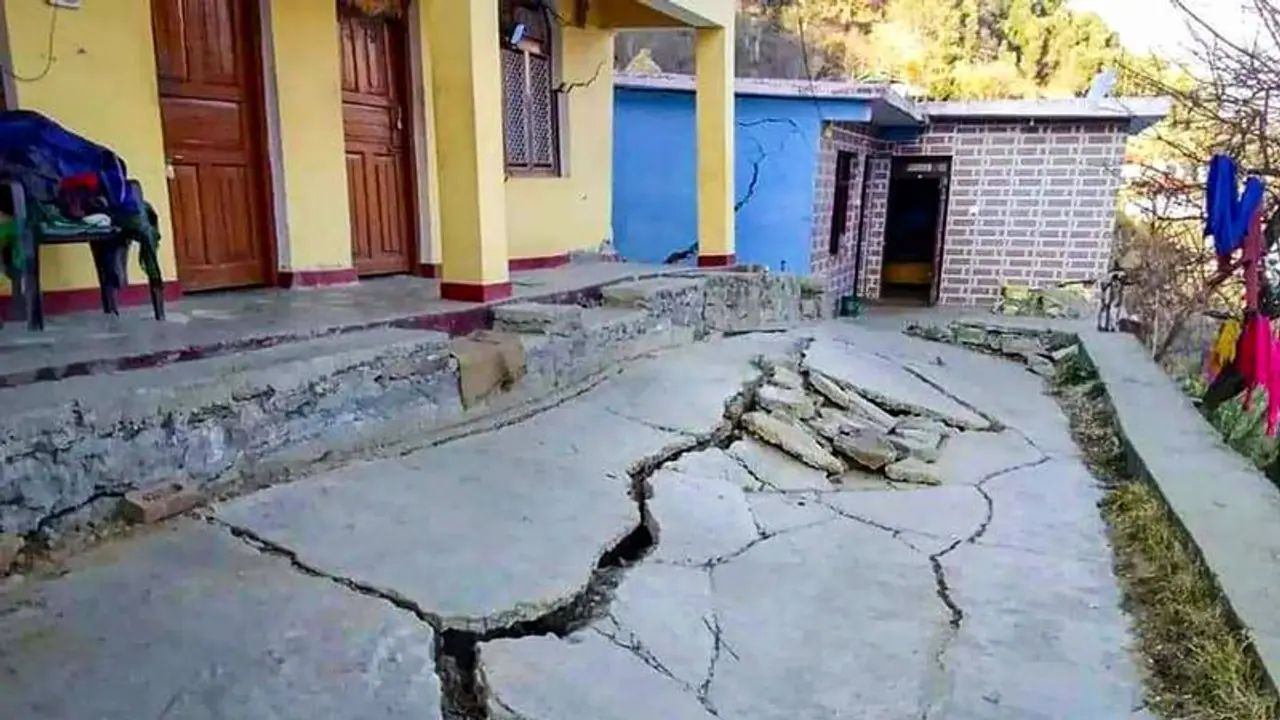Earth Sciences Minister Jitendra Singh said the observation systems would be installed by Wednesday. Additionally, Singh said there was a critical need for fundamental research of the physical processes that lead to the failure of the brittle layers beneath the crust and sub-crust.
The Centre announced that it would install micro seismic observation equipment in Uttarakhand's sinking town Joshimath, on Tuesday, January 10, 2023.

Earth Sciences Minister Jitendra Singh announced at the India-UK Geosciences Workshop that the observation systems would be installed by Wednesday.
While addressing the workshop, Singh said there was a critical need for fundamental research of the physical processes that lead to the failure of the brittle layers beneath the crust and sub-crust.
The minister stressed that the human consequences of natural disasters in India were quickly rising and emphasised the importance of developing appropriate mitigation techniques.
Also, Singh mentioned that the Ministry of Earth Sciences had constructed 37 new seismological centres with broad observation facilities in the previous two years, resulting in a huge database for outcome-oriented analytics.
In the next five years, 100 new seismological centres will be opened across the country to increase real-time data monitoring and data collecting. The official said a seismic microzonation study for the area would provide resilient risk standards for safer houses and infrastructure.
They claim Joshimath lies in the most significant seismic hazard zone, Zone V, as it experiences continuous seismogenic forces.
According to the official, seismic energy generated by micro-earthquakes may have decreased the strength of the rocks as Joshimath is located in the earthquake rupture zone of the 1999 Chamoli earthquake.
Additionally, the official said the climatic factors, including high precipitation and water, flow from mountains into large cracks and fractures in the subsurface rocks, causing cracks to grow and rock material to slip faster.
In the last 50 years, Scientific understanding of the mechanisms underlying disasters has developed enormously, and there is a need to strengthen further international cooperation, such as the Indo-UK initiative to fight such disasters, said Singh.
British High Commissioner Alex Ellis, Wendy Matcham, Head, Natural Environment Research Council (NERC), UK Research and Innovation (UKRI), O P Mishra, Director, National Centre for Seismology, and Sukanya Kumar, Acting Director, UK Research and Innovation India, all attended the two-day session.
(With inputs from PTI)
Also read: Joshimath 'sinking': Construction work at NTPC site halted as evacuations continue
Also read: Joshimath land subsidence: Supreme Court declines urgent hearing, says 'institutions working on it'
Also read: Joshimath 'Sinking': Massive cracks threaten Shankaracharya's Jyotirmath
